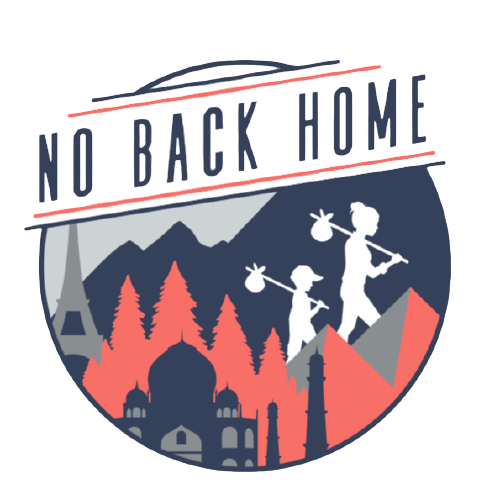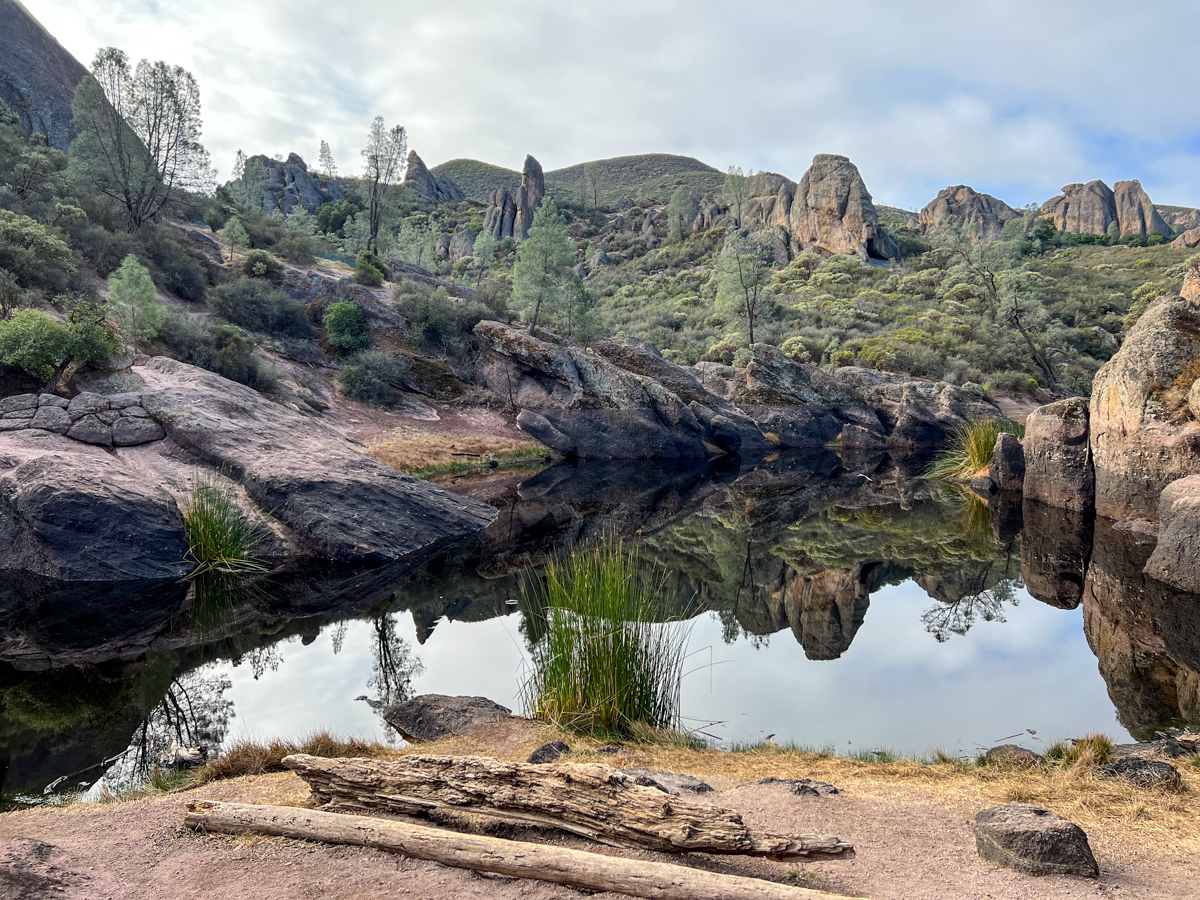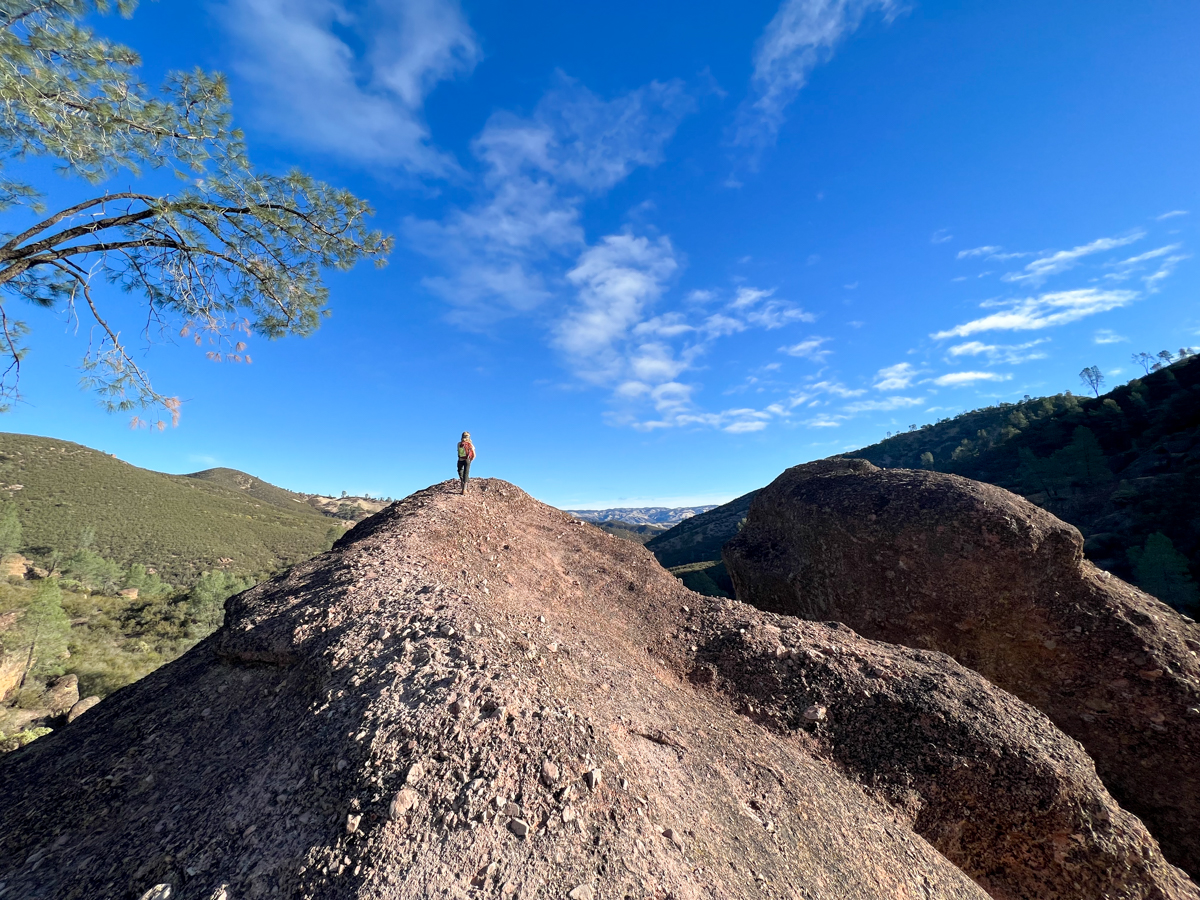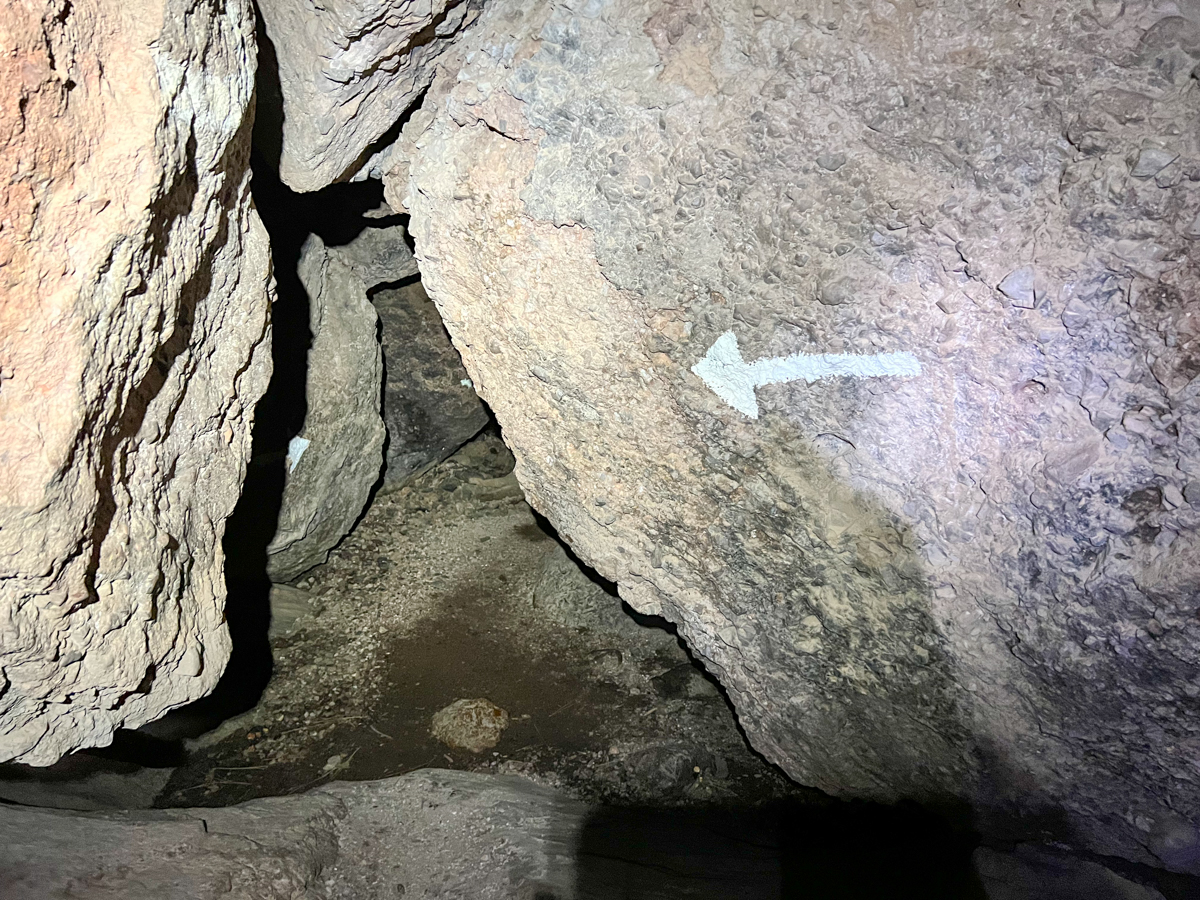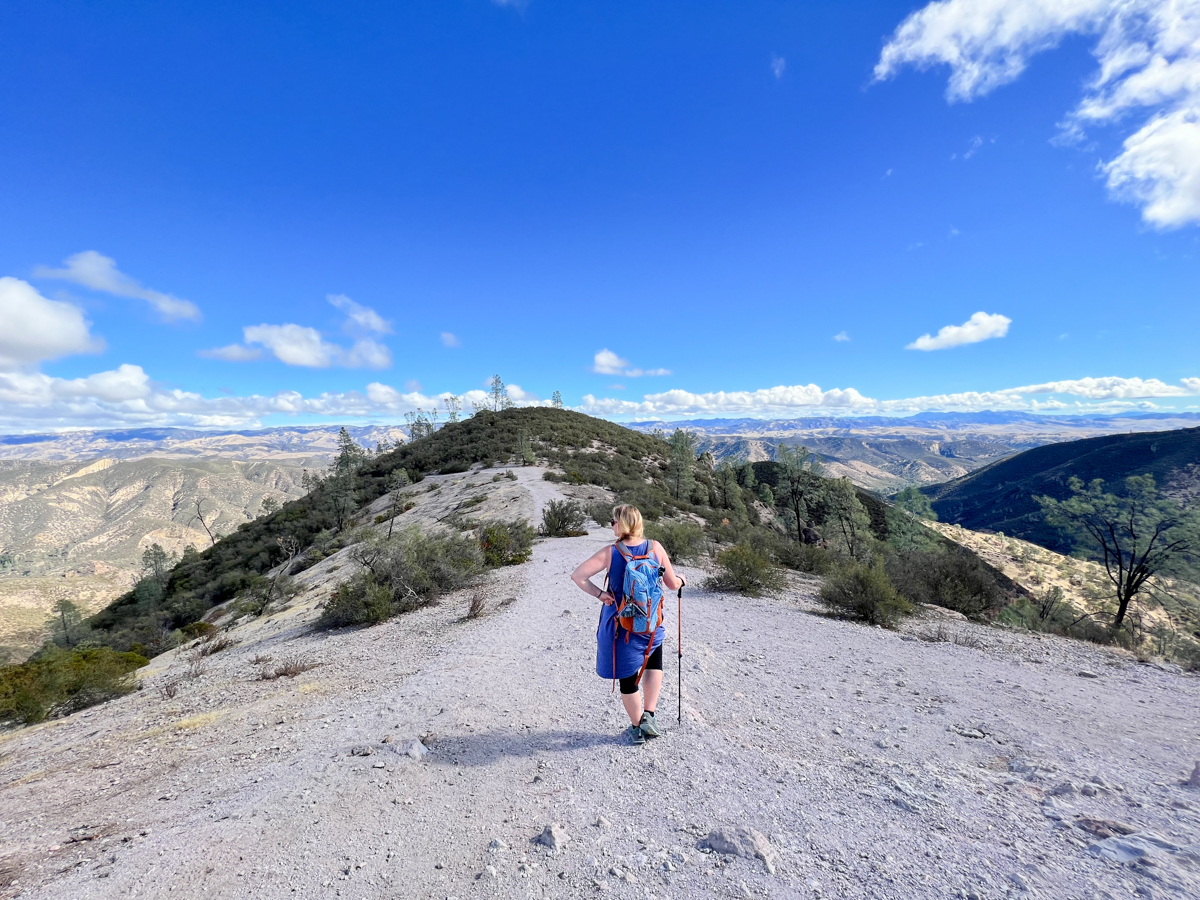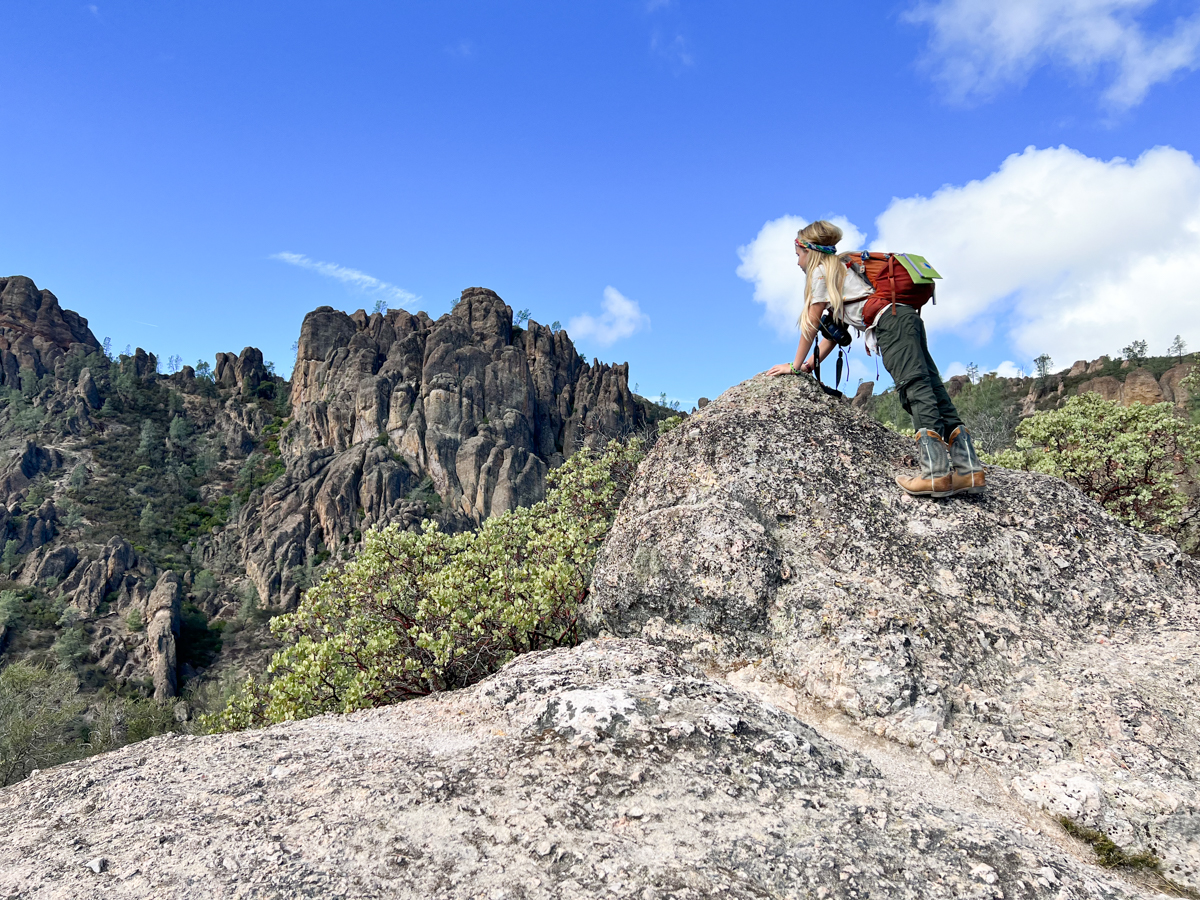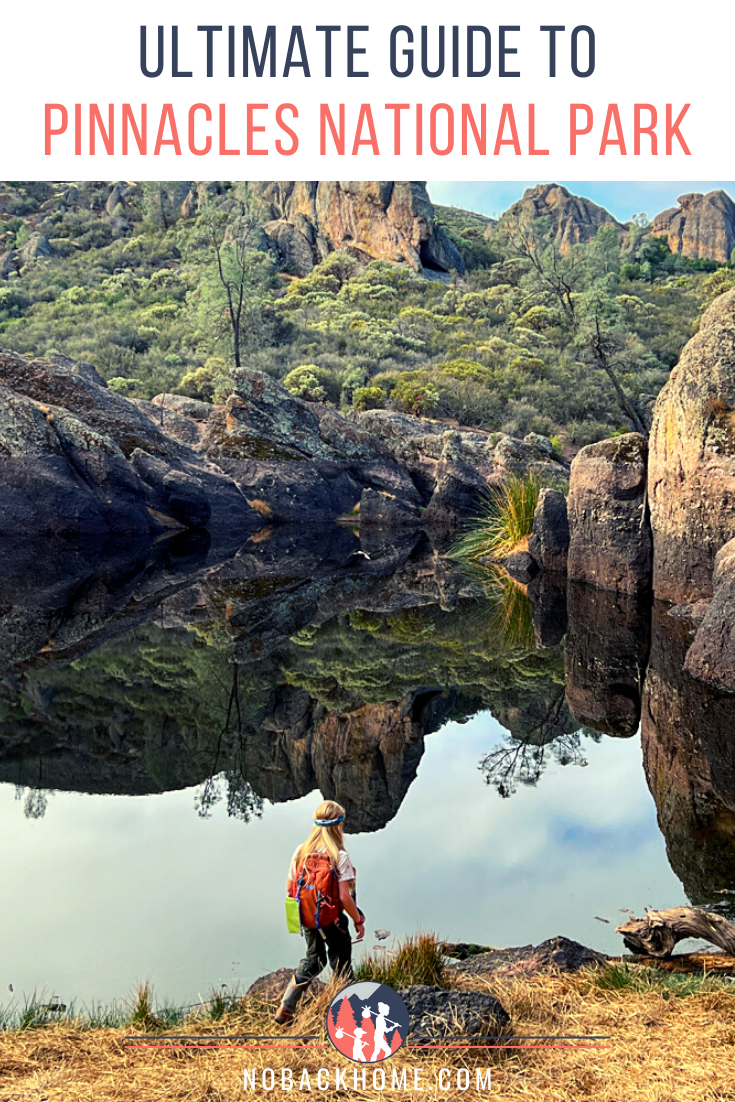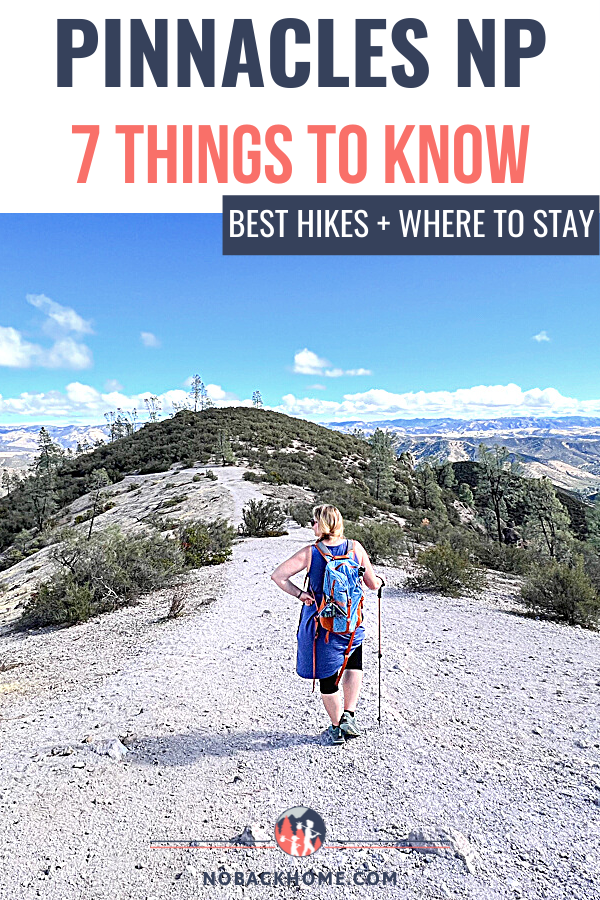Are you planning a trip to Pinnacles National Park in California? Whether you are interested in seeking out California condors, hiking through talus caves or rock climbing, California’s smallest national park packs a lot in for all types of visitors. Pinnacles is mainly known as a hiking park, with towering rock formations, an abundance of wildlife and unique caves located right in the middle of California.
Pinnacles National Park was moved from a National Monument in 2013 by President Barack Obama to become one of California’s newest national parks. This small park, only 42 square miles, provides ample opportunities for visitors looking for relaxation or an active holiday outdoors. Once an under the radar park, attendance continues to grow making this a popular destination for those in and outside of California.
Disclosure: Some of the links in this post are affiliate links, meaning at no additional cost to you, I will earn a commission if you click through and make a purchase.
Jump to a Heading Below
Where is Pinnacles National Park
Pinnacles National Park is located in what feels like the middle of nowhere in Central California. The park is located approximately 50 miles inland from the coast, about 2.5 hours south of San Francisco, 1.5 hours from Monterey and about 4.5 hours north of Los Angeles. While located within easy reach of major cities in Southern California, it is also quite off the beaten path with the nearest town (Hollister) more than 30 miles away. Regardless, the park is in a great spot to stop on a state road trip or as its own destination.
Note, the park has two entrances, one on the west side and one on the east. If you plan to camp, you will probably use the east entrance as that is where the campground is located. For day trippers, you will most likely use the western entrance. There is no way to drive through the park as the roads from each entrance DO NOT CONNECT. For planning purposes, it takes about two hours to drive from one entrance to the other.
Please note that Pinnacles National Park is the traditional lands of the Popeloutchom (Amah Mutsun) and Chalon peoples. To learn more about the peoples who call these lands home, you can find more information at Native Land.
Why You Should Visit Pinnacles National Park
Pinnacles is a special park worth visiting not only for the beautiful natural scenery, but also the wildlife present in such a small area. The unique land formations found in Pinnacles is what remains of an ancient volcano field from about 23 million years ago. The actual volcanic field was almost 200 miles southeast of the park, but as the pacific plate moved, it broke the volcanic field and carried a portion of it to where Pinnacles is today. Over millions of years, the rock spires were created by erosion from wind, rain and ice, providing what we see today.
Along with these unique rocks jutting into the horizon, you will also find rare talus caves here. Talus caves are created when earthquakes cause huge volcanic rock boulders to become lodged between narrow rock walls creating small crevices that visitors can walk and crawl through. The caves are not only fun to walk through, but they are also important homes for several species of bats.
Furthermore, Pinnacles is well known as one of the best places in California to see the California Condor. This massive bird was once almost extinct, but has been repopulated through various zoo programs across the state. The birds are now thriving in this area, providing another reason for visitors to flock to this park.
Getting Around Pinnacles National Park
With only 2 entrances and less than 5 miles of road on each side of the park, you can imagine that traffic can be difficult during peak season and parking can be quite limited. The peak season to visit Pinnacles National Park is mid-February through early June. During the weekdays, the park is a bit quiet, but during the weekends parking lots fill up quickly.
Arrive early or prepare to wait in line to enter the park. During non-pandemic times, there’s a Shuttle on the East side to shuttle people from the Visitor Center to Bear Gulch Day Use Area which is one of the most popular hiking areas. This shuttle typically runs only on weekends and holidays. At the time of writing (2021) the shuttle is not operating.
Where to Stay Near Pinnacles National Park
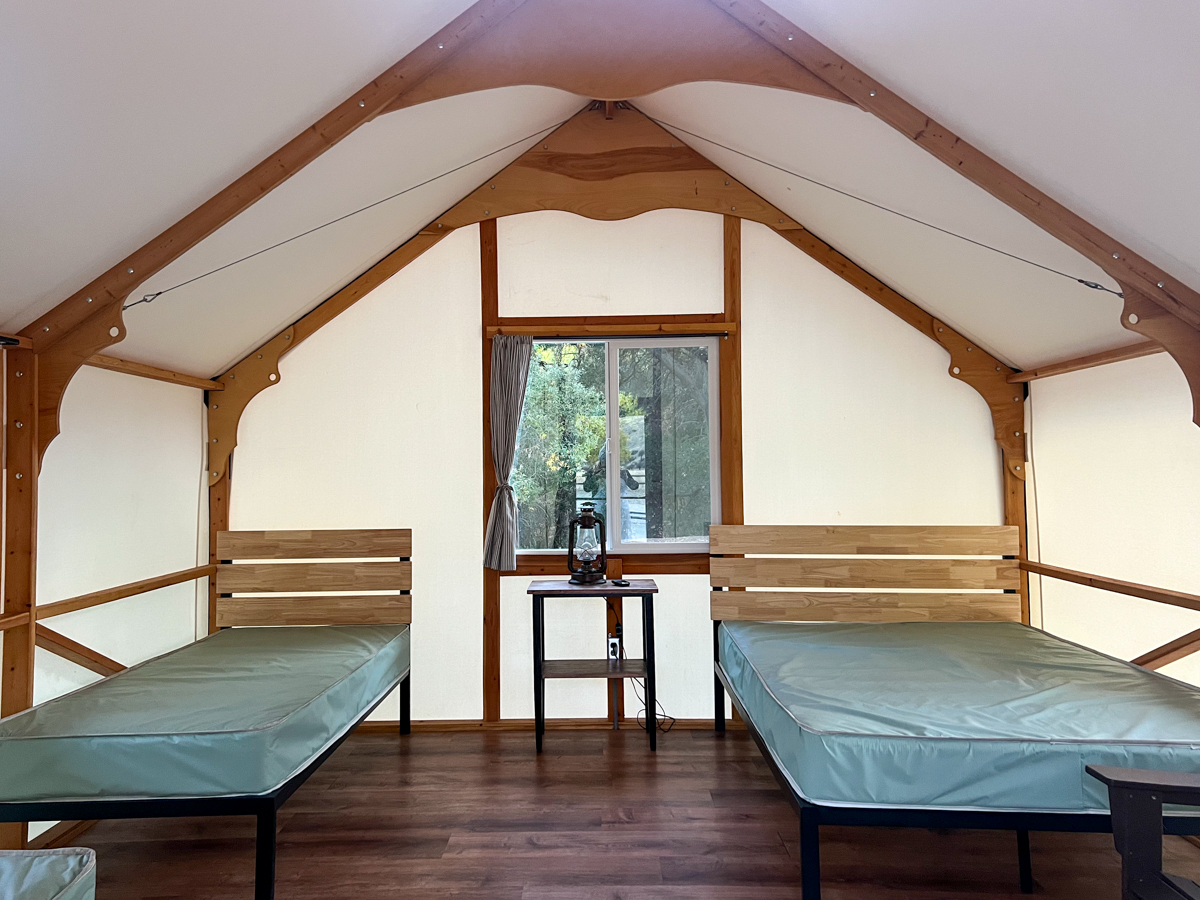 When visiting Pinnacles National Park, there are limited options for those who want to stay overnight. Options inside the park are limited to camping, while there are a few other options outside of the park on both the East and West sides.
When visiting Pinnacles National Park, there are limited options for those who want to stay overnight. Options inside the park are limited to camping, while there are a few other options outside of the park on both the East and West sides.
Pinnacles National Park Camping Options
There is only one campground in Pinnacles National Park, the Pinnacles Campground, which is located on the eastern entrance of the park. There are various types of camping options at Pinnacles including tent only spots, cabins with beds as well as RV sites with hookups. The campground is spread out in several different loops, however all spots are close together with many offering very little shade.
There are flush toilets and a coin operated shower house available year round. During the summer there is also a swimming pool for guests use.
We recommend camping or staying in the cabins as this allows you ample opportunities to see the endangered California Condor as they are often soaring over the campground in the early morning and later afternoons.
To find out more information on booking a tent site or a cabin, go to Recreation.gov.
Hotel Options on the East Side of Pinnacles National Park
There are few options for staying outside of Pinnacles on the east side of the park.
- Bar SZ is a dude ranch that is the closest option. However, they are in the process of moving locations, which is currently unknown.
- For visitors arriving from the north, Tres Pinos Inn is the closest option.
Hotel Options on the West Side of Pinnacles National Park
Accommodation options are a bit less sparse on the west side of the park. Besides the options provided here, you can go further afield to Monterey and visit the park as a day trip.
- Inn at the Pinnacles is the closest option to the West entrance. This hotel is often booked out months in advance as it is only 5 minutes from the park’s entrance.
- In Soledad there are two budget friendly options, although dated and a bit worn.
 Quick Look: Things to Know When Visiting Pinnacles National Park
Quick Look: Things to Know When Visiting Pinnacles National Park
- The best times to visit are between October – May. Temperatures during the summer can be quite hot. The winters are mild, making it ideal to visit.
- The Bear Gulch Caves are often closed from Mid-May to mid July when the local bats are nesting.
- There are two park entrances – East and West. The roads between are NOT connected. It is approximately 2 hour drive from one entrance to the other.
- There is a $30 entrance fee to enter the park. Consider buying an America the Beautiful Pass for $80.
- Pinnacles only has one campground. It is on the east side of the park.
- Parking is very limited in the park. During the weekends and on holidays, the lots will fill by 10 am.
- Outside of COVID times, a weekend and holiday shuttle is offered on the East side of the park between the East Pinnacles Visitor Center and Bear Gulch.
- Junior Ranger Booklets can be picked up at the park entrance kiosk, not at the visitors center.
- There is one general store, but offerings are very limited. Bring in all your supplies, meals and snacks.
- Water is available inside the park at the campground, visitor centers and at some trail parking areas.
- There is no cell phone service within the park. Closest service is 20 minutes outside of the park towards Hollister.
- Download trail maps from AllTrails or Gaia before arrival.
The Best Pinnacles National Park Hiking Trails
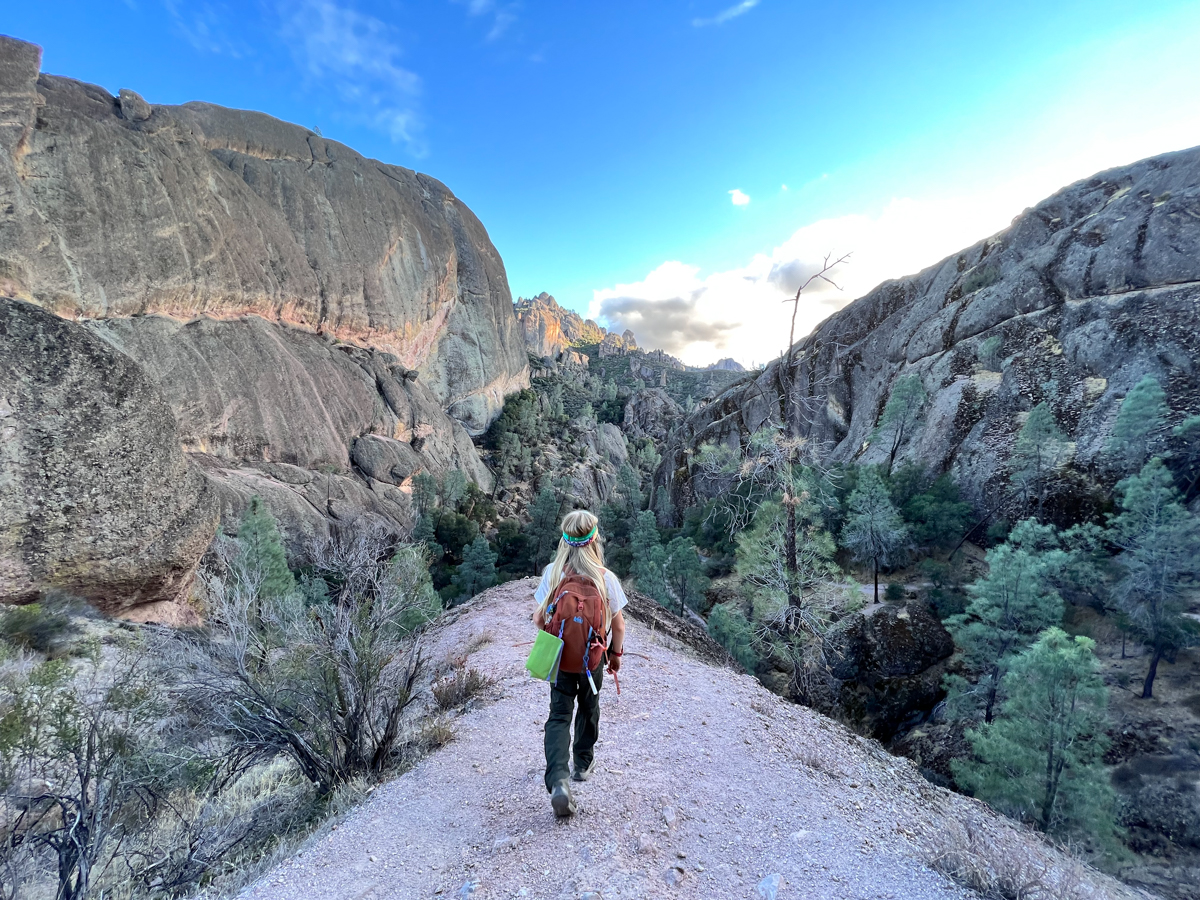 Pinnacles National Park has around 30 miles of trails, ranging from easy to strenuous. The low number of miles and the fact that many trails intersect, provides flexibility in seeing a great deal of the park in a short amount of time. Visitors can hike short loops or create longer all-day hikes on the trail systems.
Pinnacles National Park has around 30 miles of trails, ranging from easy to strenuous. The low number of miles and the fact that many trails intersect, provides flexibility in seeing a great deal of the park in a short amount of time. Visitors can hike short loops or create longer all-day hikes on the trail systems.
However, I will say that the trail maps provided by the park are not great. I would highly recommend you download the Gaia map for the area or specific trails on All Trails before entering the park. This will make it much easier for you to combine trails.
Some of the best hikes in Pinnacles National Park include: Bear Gulch Reservoir, High Peaks and the Balconies area.
Moses Spring via Bear Gulch Cave
If you only have time for one hike in the park, we highly recommend it is the Moses Spring Trail to Bear Gulch Reservoir and Caves. This 2.2 mile round trip hike is a great option to see rock formations, views over the park, see the reservoir and hike through the Bear Gulch talus cave. Elevation gain is moderate at 500 feet. If you plan to hike inside the cave, make sure to bring a flashlight or headlamp as it is very dark in many sections.
The Bear Gulch cave is the perfect place to try to spot the local Townsend Big Eared Bats that call this park home. The trail is super fun for kids as they can stomp through the creek in the cave, scramble under massive boulders and feel like a real adventurer with their headlamps on. Note this trail begins on the eastern side of the park.
 Which Way to Go?
Which Way to Go?
Our recommendation is to hike the trail counter clockwise starting on the Moses Spring trail. At the first fork in the nature trail, head to the right, which will lead you uphill. Stay on the Moses Spring Trail as there are other options to head off to the Rim Loop. Continue to the reservoir where you can then descend into the Bear Gulch Cave just below the bridge. Once inside the cave you will be going the opposite direction of the painted arrows.
Hiking the trail in this direction means that all your uphill is on the dirt path, not the stairs located at the entrance and exit of the cave system.
Condor Gulch Trail
Condor Gulch Trail is a popular trail that can be connected to other trails to extend it well beyond its 1.7 miles one way. This trail has an elevation gain of about 1,100 feet to the connection point to the High Peaks Loop. Condor Gulch Overlook is only 1 mile up the trail, offering a glimpse of condor nests as well as the High Peaks above.
Keep an eye on the skies above you as hike as this is a great place to see condors flying overhead. This trail is also located on the eastern side of the park.
High Peaks Trail
There are various options on how to complete the High Peaks Loop. One option is to start at the Condor Gulch Trailhead, heading up to the High Peaks Loop turn off, heading along the “Steep & Narrow” section and then coming down the Moses Spring trailhead. Completing the loop in this fashion will require the shuttle or the need to walk along the roadside path to get back to your car.
Additionally, once you’re in the High Peaks area, the trail narrows to single-file with railings and – at times – foot tracks carved into the rock. This section isn’t too scary, but is worth being prepared for, as it does require careful attention to your foot placement while hiking. Note, I would not recommend this section of the trail for young kids unless they are well adjusted to hiking in these types of situations.
This trail can be accessed through various trails on both the eastern and western sides of the park.
Old Pinnacles Trail to Balconies Cave Trail
Even clocking in at around 6 miles, the Old Pinnacles Trail to the Balconies Cave is an easy hike with very little elevation gain. The most elevation gain is towards the end as you complete the Balconies Cliffs Loop from the exit of the cave. Note, this cave complex is quite dark, requiring the use of a flashlight, not just your phone light. Additionally, hiking through the cave tends to be more “bouldering” than hiking as you will need to climb up and down several large boulders to make it through to the other end. Be cautious during the rains as the canyon floor can become quite wet.
Top 5 Things Not To Miss In Pinnacles National Park
 Spot Condors
Spot Condors
One of the biggest draws to Pinnacles National Park is the California Condor. In 1987, the largest bird in North America was deemed extinct in the wild. However, due to a captive breeding program by several zoos in California, the condor population has slowly been increasing. Pinnacles National Park is one of the release sites for these majestic birds, making it an hot spot for bird watchers looking to catch a glimpse of these prehistoric looking birds.
On average, Pinnacles has around 27 condors in the park. Of course they are wild, so they are free to come and go. If you are looking to catch a glimpse, make your way to the viewing area across from the General Store / Campground site 4 in the early morning and late afternoon hours as they tend to be coming/going from the trees up on the hills.
Explore a Talus Cave
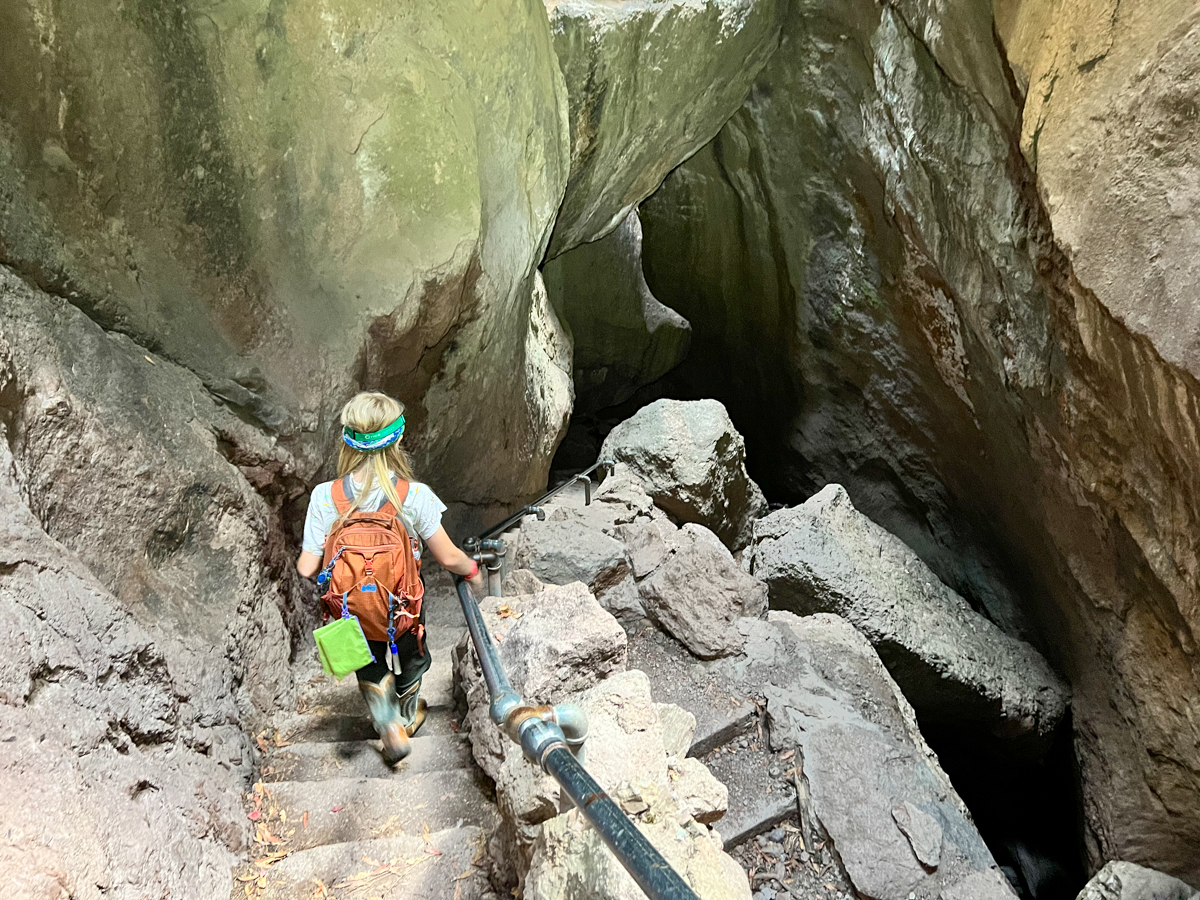 As I mentioned previous, a talus cave is a unique cave formation not quite like typical caves. These caves have been created when narrow canyons are filled in with boulders falling from the cliffs above. Don’t worry this doesn’t happen regularly! There are two areas with talus cave systems within Pinnacles National Park – one is the Bear Gulch Cave and the second is the Balconies Cave.
As I mentioned previous, a talus cave is a unique cave formation not quite like typical caves. These caves have been created when narrow canyons are filled in with boulders falling from the cliffs above. Don’t worry this doesn’t happen regularly! There are two areas with talus cave systems within Pinnacles National Park – one is the Bear Gulch Cave and the second is the Balconies Cave.
Visiting these caves are one of the most unique experiences you can have at this park. I highly recommend coordinating your visit when the caves are open (go here to see current status). They often close during the year to help protect the Townsend Big Eared Bat species that call these caves home. Typically you can look to see both caves in the fall (October and early November) as well as off and on during the spring until May. In May, much of the Bear Gulch Cave system is closed until mid summer.
Search for Red Legged Frogs at the Bear Gulch Reservoir
Another amazing reintroduction story here at Pinnacles National Park is the Red Legged Frog. Once upon a time the area was filled with these little guys, but the illegal introduction of trout in the reservoir wiped their population away. After quite a bit of work (draining the reservoir to remove all of the fish) and many years later, the red legged frog is making a comeback. Luckily they are also located on one of the best hikes in the park.
To try your hand at spotting one, hike up to Bear Gulch Reservoir via Moses Springs Trail. See my description above on our recommendation on how to get to the reservoir first (or if you don’t want to do the cave hike).
Check Out the Big Eared Bats
As you can tell our top things to do at this park include spotting all of the amazing wildlife! While you are at the Bear Gulch Cave make sure to keep an eye up to the top of the cave for the Townsend Big Eared Bats. We were lucky to see a few during our hike. One even sat there for a while letting us closely check out the big ears and how unique these animals are. Such a fun trail, made even more exciting by seeing frogs and bats!
Hike the Trails
Like I mentioned above there are over 30 miles of trails within the park, making this a true hiking park. With minimal roads, the best way to see the park is on your own two feet. You can begin on one side of the park and literally hike to the other side of the park in not too long. Check out the trail maps before you arrive so that you can easily map out your must do trails. In one day we easily hiked 11.5 of the 30 miles of trails, but there were many more we wish we knew about in advance.
Pinnacles National Park Weather
The weather at Pinnacles National Park is variable throughout the year. The best weather tends to be during the fall and spring periods with cool nights and warm days. You can expect fog at any time of the year, which will blanket your campsite in a lot of morning moisture. I.E., make sure to cover up anything you don’t want wet!
Summer can be brutal in the park with temperatures soaring into the 90s and 100s. If you visit during the hot summer months, be prepared for early morning and late afternoon hiking, carry plenty of water and bring sun protection as there is little shade on many of the trails. If you are camping, also consider bringing a pop up tent for your campsite as many sites have very little shade.
What to Pack for Pinnacles
Packing for a visit to Pinnacles National Park is much like many other destinations for camping or hiking. We have a detailed camping packing list for families here. In addition to that detailed list, I would also recommend the following.
- Binoculars: It is essential to get a great view of the condors flying overhead to have a good pair of binoculars. In addition bird watchers will enjoy seeing golden eagles, wild turkeys and turkey vultures as well. We suggest these if you do not already have a pair.
- Reusable water bottles: There is only one store in the park, making reusable water bottles essential during your visit.
- Plenty of snacks/food: Again, there is only one small shop with limited stock, so load up on snacks and meals before your arrival.
- Sun Protection: There is little shade on trails or at the campground, prepare by bringing ample sunscreen and sun hats.
- Hiking Boots: If you plan on hiking any of the High Peaks or caves, grippy hiking boots or shoes are essential.
Looking for more inspiration for a California trip?
- Highway 1 Road Trip
- Best Things to do in San Francisco’s Fisherman’s Wharf
- Ultimate Guide to Yosemite
- Sequoia and Kings Canyon
- Sequoia in Winter
If You Enjoyed This Post, Sign Up To Receive Posts By Email or…
